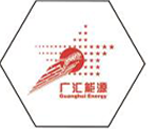
Oct . 13, 2024 01:02
Back to list
natural gas pressure reducing valve
Understanding Natural Gas Pressure Reducing Valves
Natural gas is an essential resource that powers homes, industries, and transportation systems worldwide. To ensure the safe and efficient delivery of this vital energy source, various components are utilized in gas distribution networks, one of which is the pressure reducing valve (PRV). This article explores the significance, functionality, and essential considerations surrounding natural gas pressure reducing valves.
A pressure reducing valve is a mechanical device designed to control the pressure of natural gas flowing through a pipeline system. High-pressure gas, often transported over long distances, is delivered to the consumers at lower, more manageable pressures. PRVs play a crucial role in making this transition seamless and safe, as they prevent potential hazards associated with excessive pressure, such as leaks, equipment failure, or even explosions.
The primary function of a gas pressure reducing valve is to maintain a stable outlet pressure despite fluctuations in the supply pressure. Typically, the high-pressure gas enters the PRV and acts upon a diaphragm or piston inside the valve. As the gas pressure pushing against the diaphragm increases, the valve automatically adjusts to reduce the flow, thereby lowering the output pressure to a pre-determined level. This mechanism ensures that gas is delivered consistently to consumers, whether in residential applications or industrial processes.
natural gas pressure reducing valve

There are several types of pressure reducing valves available for natural gas applications, including direct-operated and pilot-operated valves. Direct-operated valves are simpler and typically used for smaller flow rates, while pilot-operated valves are suited for larger installations where precise pressure control is essential. Both types are designed to provide reliability and efficiency in regulating gas flow.
Installation and maintenance of PRVs are fundamental to their functionality. Ensuring that the valve is installed correctly within the pipeline is essential for optimal operation. Regular inspection and maintenance are also critical to prevent wear and tear, which can lead to failures or leaks. Operators should follow manufacturer guidelines and industry regulations to uphold safety standards.
Furthermore, understanding the specific requirements for different applications is crucial. Factors such as gas type, expected flow rates, and environmental conditions influence the selection and sizing of pressure reducing valves. Consulting with professionals and adhering to local codes can aid in making informed decisions and ensuring compliance.
In conclusion, natural gas pressure reducing valves are vital components in the gas distribution infrastructure. By regulating the pressure of the gas supply, they not only enhance the safety and efficiency of gas delivery but also protect consumers and equipment from potential damages. Awareness of their operation, installation, and maintenance can lead to improved performance, ensuring that natural gas continues to be a reliable energy source for various needs.
Latest news
-
Safety Valve Spring-Loaded Design Overpressure ProtectionNewsJul.25,2025
-
Precision Voltage Regulator AC5 Accuracy Grade PerformanceNewsJul.25,2025
-
Natural Gas Pressure Regulating Skid Industrial Pipeline ApplicationsNewsJul.25,2025
-
Natural Gas Filter Stainless Steel Mesh Element DesignNewsJul.25,2025
-
Gas Pressure Regulator Valve Direct-Acting Spring-Loaded DesignNewsJul.25,2025
-
Decompression Equipment Multi-Stage Heat Exchange System DesignNewsJul.25,2025

